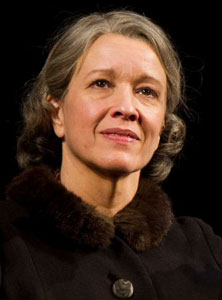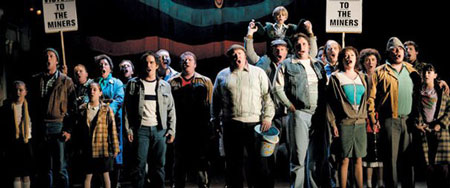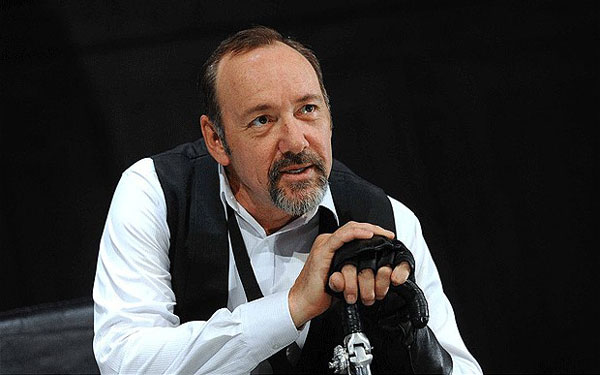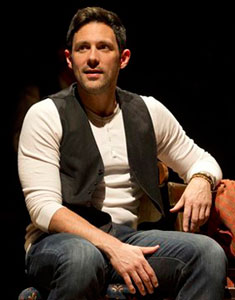 The latest Broadway revival of Death of a Salesman has been both a critical and financial smash (it has already turned a profit and still has a few weeks of shows left), and director Mike Nichols and stars Philip Seymour Hoffman and Andrew Garfield have gotten the lion’s share of the praise.
The latest Broadway revival of Death of a Salesman has been both a critical and financial smash (it has already turned a profit and still has a few weeks of shows left), and director Mike Nichols and stars Philip Seymour Hoffman and Andrew Garfield have gotten the lion’s share of the praise.
But let’s not forget about the other cast members: Linda Emond, who stars as Linda Loman, has also received great reviews for her challenging role. In an interview with Broadway.com, Emond explains how she got the role and how she developed her interpretation of the tragic character.
Curiously enough, Emond didn’t so much audition for the part as she was told she would be doing it! She explains, “Mike [Nichols] called me in July of 2010 on a random day and said they were going to do this production, and Phil was going to play Willy and would I play Linda. To get that phone call was nice! I had first met him through Tony Kushner. We were doing one of the first productions of Homebody/Kabul when Tony and Mike were working on Angels in America for HBO, and I met [Mike] and loved him from the beginning. He has been incredibly supportive of my work from that time on.”
But getting into the role wouldn’t be as easy as getting it. After all, being that Death of a Salesman is one of the most acclaimed plays in American theater, Emond had to be sure to adhere to what had been established in the role while also making it her own. She says, “It really is a process for me of digging and saying those words and trying to find out who that person is that would use those words in that way. It was a complex thing, certainly, given the dynamic of that family and the time period. There’s nothing in [the script] about the term that is often attributed to her: ‘long-suffering.’ [Original director Elia] Kazan called her ‘terrifyingly tough,’ and I agree. I was struck by the number of things she says that are really wise, and there’s also a lot she says that, frankly, is bullshit because it’s caught up in Willy’s dreams and ideas. But boy, it’s evident that there is a strong amount of love for Willy and those boys! Frankly, when you are going into a play like this with a long and extraordinary history, there are given opinions of what a part is, and you have to work hard to shed all of that and say, ‘I have to find my connection to it, with these people in this room, with Mike Nichols at the helm, on this set.'”
While some have commented on the fact that both Emond and Hoffman are younger than how most audiences perceive the Lomans (Emond is 52, Hoffman is 44), Emond points out that we’re mistaken. “We are not really younger than the parts, because the play takes place in two time periods. Everybody always thinks the characters are the older age, but the truth is that they are two different ages. You really want actors in the middle, who can play both. My age range in the play is 41 to 58ish, and I’m in the middle of that, so it’s perfect.”
Death of a Salesman runs through June 2 at the Barrymore Theatre




